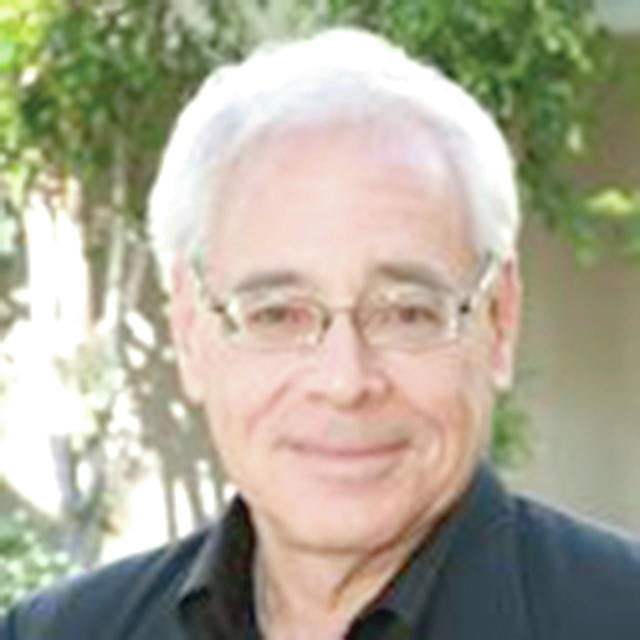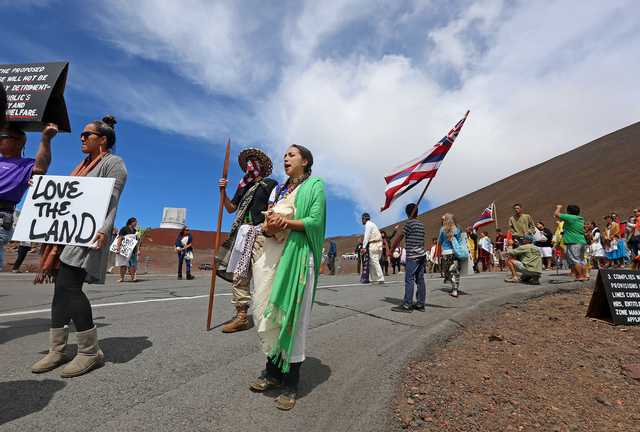HILO — Nearly two years have passed since protesters were arrested while blocking construction of the Thirty Meter Telescope on Mauna Kea. ADVERTISING HILO — Nearly two years have passed since protesters were arrested while blocking construction of the Thirty
HILO — Nearly two years have passed since protesters were arrested while blocking construction of the Thirty Meter Telescope on Mauna Kea.
But Mehana Kihoi said Tuesday during the project’s contested case hearing that the wounds remain.
With her daughter standing by her side, she questioned TMT project manager Gary Sanders, who was testifying, about those arrests and at times accused him of being responsible for the pain she said they caused.
Kihoi was among several dozen protesters, who say they were protecting a sacred mountain, arrested in 2015 while blocking vehicles on the Mauna Kea Access Road. Protests in October 2014 also halted the project’s groundbreaking.
“She witnessed me being handcuffed in an area we consider to be sacred while I am in prayer,” Kihoi said, referring to her daughter. She asked what the project, which includes educational support for Native Hawaiians and other Hawaii Island students, does for those who were “mentally, physically and spiritually” harmed.
Hearings officer Riki May Amano sustained an objection to the question, and several others, from TMT International Observatory attorney Douglas Ing, preventing a response.
Protesters used their bodies and large rocks to block construction crews, which put the project on hold.
In late 2015, the state Supreme Court overturned the $1.4 billion project’s land use permit because of procedural violations, requiring a second contested case to be held before any work could resume.
Kihoi, who joined the quasi-judicial hearing as a party last year, described the events as being emotionally traumatic.
“How does it make you feel that you were responsible for creating irreparable and irreversible emotional, mental and spiritual harm against our Native Hawaiian and non-native Hawaiian community?” she asked Sanders.
That prompted another objection, which was sustained.
The 180-foot-tall telescope would join 13 others on the mountain. While reaching about 30 feet higher than other observatories, Sanders said it’s designed to be as compact as possible.
He said in his written testimony the project has spent $2.5 million supporting educational programs on the island.
Harry Fergerstrom, a Hawaiian independence advocate and hearing participant, again sought to raise claims of the existence of the Hawaiian kingdom, which Amano previously ruled is not relevant for the process.
As part of that argument, he displayed a trespass notice he gave Sanders during the groundbreaking that Fergerstrom claimed was from the kingdom.
“I want to know how any attorney in this room can claim this is the United States of America,” Fergerstrom said, after Ing objected to the questions.
Amano told him she already ruled on the matter. “Please move on to the next question,” she requested.
Fergerstrom apologized in advance for taking a confrontational approach.
“I mean no disrespect to you as a person,” he said to Sanders.
He later accused Sanders of “grinding up my ancestors” by conducting site clearing on Mauna Kea and for placing his “toy on my temple.”
Other project opponents questioned Sanders about the size and design of the telescope, mitigation measures and funding for decommissioning.
He said rock excavated for construction would be stored near the astronomy precinct and used later to restore the site, located on the mountain’s northern flank at 13,100 feet above sea level.
In response to questions from Yuklin Aluli, attorney for the environmental group KAHEA, Sanders said each partner country is committed to covering the costs of removing the telescope if it has to come down early.
The telescope organization’s partners are Caltech, University of California, Association of Canadian Universities for Research in Astronomy and national institutes in Japan, China and India.
Sanders will continue his testimony today at the Grand Naniloa Hotel.
The hearing, which started witness testimony in October, is scheduled through January.
In addition to Mauna Kea, TMT International Observatory also is considering building the telescope in the Canary Islands as a result of lengthy delays.
Project officials say they intend to resume construction in April 2018 at either site.
Email Tom Callis at tcallis@hawaiitribune-herald.com.




